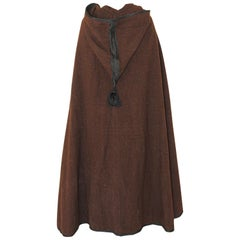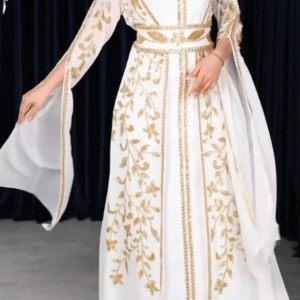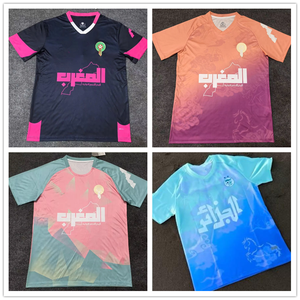- Published on
Unveiling the Burnous The Hooded Cape of North Africa
- Authors

- Name
- Adil ABBADI
Introduction
The burnous, a majestic hooded cape, has been an integral part of North African cultural heritage for centuries. Worn by both men and women, this traditional garment not only provides protection from the harsh desert climate but also embodies the region's rich history, social status, and cultural values.

- Cultural Context
- Traditional Significance
- Modern Relevance
- Cultural Preservation
- Conclusion
- Cultural Call-to-Action
Cultural Context
The burnous has its roots in ancient North Africa, where it was worn by the Berber and Arab populations. The garment was an essential part of the traditional attire, serving as a shield against the scorching sun, sandstorms, and harsh winds. Over time, the burnous became a status symbol, with the quality and design of the garment indicating the wearer's social standing and wealth.
Traditional Significance
In traditional North African societies, the burnous was more than just a piece of clothing. It held deep cultural and symbolic significance. The garment was often passed down from generation to generation, with each family member contributing to its design and craftsmanship. The intricate embroidery, tassels, and other adornments on the burnous told stories of the wearer's family history, social status, and cultural heritage.

Modern Relevance
In modern times, the burnous continues to be an important part of North African cultural identity. While its original purpose as a protective garment has diminished, the burnous has evolved into a symbol of cultural heritage and national pride. Many modern designers have incorporated traditional burnous designs and motifs into contemporary fashion, ensuring the continuation of this rich cultural legacy.
Cultural Preservation
Efforts to preserve and promote the traditional burnous are underway. Cultural institutions and organizations are working to document and preserve the history and craftsmanship of the garment. Many artisans and designers are also working to innovate and adapt the traditional burnous to modern tastes, ensuring its continued relevance and appeal.

Conclusion
The burnous is an integral part of North African cultural heritage, embodying the region's rich history, social values, and cultural traditions. As a symbol of cultural identity and national pride, the burnous continues to inspire and influence modern fashion and design. By embracing and preserving this cultural legacy, we can ensure the continued relevance and appreciation of this majestic garment
We encourage readers to explore and appreciate the rich cultural heritage of North Africa, and to support initiatives that promote the burnous and other traditional garments. By doing so, we can help preserve the cultural significance of the burnous and ensure its continued relevance in modern times.
Cultural Call-to-Action
Join us in celebrating the burnous, a true cultural treasure of North Africa. Share your own stories and experiences with traditional garments, and let's work together to promote cross-cultural understanding and appreciation.
- "The Burnous: A Symbol of North African Cultural Identity" by Dr. Fatima Hassan's book on the cultural significance of the burnous.
- The Moroccan Ministry of Culture's initiative to preserve and promote traditional garments.
- The "Burnous Revival" project, which aims to innovate and adapt traditional burnous designs for modern audiences.
